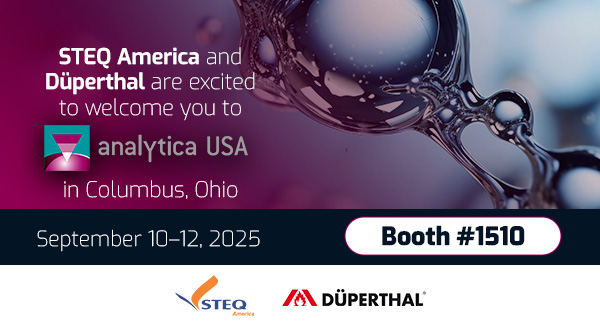New Annex 1: How IWT Pharma cGMP washers can support its compliancy (June 2023)
In the ever changing world of GMP with regards to the pharmaceutical enterprise, Contamination Control Strategy (CCS) is a requirement for any cGMP manufacturing process’s. The new Annex 1 guidance calls for a proactive means of identifying , evaluating and controlling potential risks to quality on final sterile and non sterile products manufactured. IWT Pharma cGMP washers can help our manufacturing partners implement a CCS that meets or exceeds the current standards specified.
E-FAT – What our clients say about it (June 2020)
As the name suggests, FAT – Factory Acceptance Test – is generally performed at the manufacturer’s site. During a factory visit, customers verify that the equipment is built and operating in accordance with URS and design specifications and meets relevant Good Manufacturing and Engineering Practices. When travelling is not possible for different reasons (lack of time; cost constraints; travel restrictions, etc.), an E-FAT process is the perfect solution.
Gas Cylinders in Laboratories: Safety, Purity and Cost Concerns and How Gas Generators Can Help (August 2018)
Despite the significant safety concerns that come with utilizing them, gas cylinders have traditionally been the most prevalent source of gas supply for laboratory applications. But what’s the better alternative? Find out how labs are experiencing the convenience of gas being produced on demand and at consistently high purity levels of grade 6 or 7.
The Challenges of Manually Cleaning Tanks & Blenders in Pharmaceutical Manufacturing – and How To Overcome Them (June 2018)
If you work in a pharmaceutical production facility, you may be familiar with the customary objection – “I didn’t do it, why do I have to go in the tank?”. If you’re not familiar with this saying, you may be one of the fortunate ones who has not had to experience the manual cleaning of large tanks or blending equipment in all their magnificent confinement. Risking the health and safety of an operator to clean a tank or blender is avoidable, especially when there are more optimal alternatives available which reduce the inherent dangers involved with more traditional cleaning methods. Read on to learn more about these solutions and how to implement them in your facility.
Save time & money on cleaning validation with these easy fixes: Manual versus mechanized cleaning processes (January 2018)
Bio/pharmaceutical manufacturers need to validate their cleaning processes to comply with current Good Manufacturing Practices (cGMP) and federal regulations. The objective is for the manufacturer to prove that their documented cleaning processes effectively reduce the risk of cross-contamination to an acceptable level. This cross-contamination could consist of an active ingredient or unintended compound carrying over from one product to another via commonly used production equipment. The correct cleaning and maintenance of this equipment guarantees the safety and purity of the products being manufactured…here are the things any bio/pharmaceutical manufacturer needs to look out for in cleaning validation.
Keys to successful cell therapy facilities of the future (June 2017)
The cell therapy industry is experiencing noteworthy development and acceleration thanks to novel and cutting-edge therapies. These treatments offer hope for curing disease and disorders that were previously problematic or even impossible to treat. The 21st Century Cures Act, which includes $30 million in funding over three years for regenerative medicine research, was approved by the US Congress in December 2016, and aims to accelerate the R&D and support of cell therapies in particular. Over 500 cell therapy clinical trials for oncology and cardiovascular indications are currently operational or in late-stage development.
Download this free white paper to discover what the industry’s successful cell developing and manufacturing facilities will look like in the future…
Revolutionize your HPLC waste collection with this new system (May 2017)
Hazardous wastes used in testing and research laboratories can cause critical illness, sometimes ending in the loss of life, and can be responsible for detrimental environmental threats when improperly collected or stored. According to U.S. Government Code of Regulations (Title 40, CFR 264), “A container holding hazardous waste must always be closed during storage, except when it is necessary to add or remove waste” and “A container holding hazardous waste must not be opened, handled, or stored in a manner which may rupture the container or cause it to leak”. According to OSHA regulations, these containers must also remain closed while an HPLC unit is being operated. But despite the safe storage and collection of solvents being a top priority in government regulations, it’s unfortunately still common to see laboratories using open, unlabeled, non-electrically grounded containers or equipment for the collection and storage of their hazardous waste, and engaging in a dangerous manual system of transfer for these chemical substances.
Learn more about the new technologies applied to the HPLC Service Station by Düperthal – a solution to collect and store HPLC or flammable waste.
What you need to know about Ultra-Low Temperature Freezers (November 2016)
Research and Markets have released the Global Biomedical Refrigerators and Freezers Industry 2016 Market Research Report. Analysts have forecasted this market to grow at a CAGR (Compound Annual Growth Rate) of 4.26% during the period 2016-2025. This market is expected to have substantial growth, in part, due to the growing number of healthcare facilities and blood banks in North America, and the fact that few storage items in the lab hold more precious contents than an ultra-low (ULT) freezer. Find out more in this white paper.
Demystifying the No.1 hazard in the laboratory workspace (September 2016)
Typically, pharmaceutical scientists spend most of their time in a laboratory dealing with the process of discovering drugs and testing them. Everything from discovery, to development, to manufacturing is a phase that demands an inordinate amount of investment in time and money. With all of these factors playing a part in uncovering new ways to develop more advanced and targeted drugs for patients, one other essential human element often gets overlooked – that of the health and safety of the laboratory workers themselves.
Ending the low standards in growing nutraceutical production (September 2016)
The process of producing solid nutraceuticals is currently under severe scrutiny after various sample inspections conducted by the FDA have revealed a paramount cause for concern. Consumer Reports claims that 15 dietary supplements currently on the market may cause health concerns for consumers.
Aging facility considerations in pharmaceutical and biopharmaceutical processing (August 2016)
Aging facilities are a reality and are on the rise. These facilities can work smoothly without problems, but that is often the exception and not the rule…
Are you confident that your cleaning process could pass a regulatory inspection? (July 2016)
The issue of manufactured medicines that don’t meet quality standards is a leading cause of failure towards treating patients. So where are things going wrong? Find out more in this white paper.

We’re excited to be part of the inaugural edition of analytica USA, joining forces with our longtime partner Düperthal to showcase next-generation safety and storage solutions for laboratory environments. From September 10 to 12, 2025, visit us at the Greater Columbus Convention Center – Hall B, Booth #1510, and explore our latest technologies for the secure handling of hazardous substances and lithium-ion batteries.

STEQ America LLC. is proud to be back at this major industry event, this time teaming up with our longtime partner IWT Pharma to showcase cutting-edge solutions for pharma cleaning, automation, and aseptic processing. Let’s connect at the Lincoln Financial Field, Booth C29!

Discover the essential pharmaceutical packaging solutions for freeze-dried products, from vials to dual-chamber syringes, ensuring product stability, sterility, and ease of use. Learn about quality control methods like Headspace Gas Analysis, Automated Visual Inspection, and Pressure Decay to protect patient safety and meet USP standards.